
Ever since he was little, Klaus has loved hitting golf balls. He was, he says, “a good player but not a great one”, although talented enough to represent his country in the Eisenhower Trophy.
Ask him what he enjoys most about the game, though, and it wouldn’t be competing; it would be that never-ending quest to get better. Practice.
This is no great surprise to hear, for Klaus Eldrup-Jorgensen is the co-founder and CEO of Trackman.
We learn the full story of the Danish company when we visit its state-of-the-art headquarters in Horsholm, a small coastal town just north of Copenhagen.
In just 25 years, what started out as a small group of engineers working out of Eldrup-Jorgensen’s garage – an “interesting time” he jokes – has grown into a company with more than 850 employees in seven offices, selling its products in more than 70 countries.
But more than that, its small but powerful invention has changed the game of golf in a series of ways that not even they could have predicted.

They are the masterminds behind those bright orange boxes that sit behind a large number of tour pros on the range.
To put it more precisely, Trackman is a Doppler radar-powered launch monitor with optical tracking that provides countless parameters of ball and club data.
While most golfers don’t own one personally, every golfer will have come across Trackman technology at some point, whether it’s on the range, during a lesson, at a custom fitting or simply through watching tour golf on television.

Revolutionizing Practice
Back in 2002, Eldrup-Jorgensen found himself wondering how golfers could get better feedback when they practiced: how could it be made more fun, more effective?
Then he met a radar engineer responsible for tracking bullets and missiles for the military industry. His name was Fredrik Tuxen and he also happened to like his golf. They teamed up.
It might not have felt like it for Eldrup-Jorgensen, who carried on working to fund his team of six engineers, but progress was rapid.
Within two years, Tuxen had managed to downscale the kind of radar he was used to building for the military – one that weighed hundreds of kilos and cost $2 million – into something practical (and more affordable) for golf.
It’s hard to imagine now, but some manufacturers would get people to simply stand in a field and use a laser to measure where a ball landed to record distance.
In some cases, microphones would be placed all over the range to pick up where a ball first contacted the soil.
Trackman removed the guesswork. The ingenious part: they could track a ball for its entire journey.

“Accuracy was key,” stresses Tuxen, “from launch to where the ball actually landed. It was important that we could measure the distance of a 100-yard shot with an accuracy of within one foot.”
Tuxen doesn’t like ‘bad’ numbers. “One in 200, that would be way too much,” he says with a steely eye.
In 2004, the pair travelled to America to pitch its very first $100,000 device (“we maybe should have priced it at $1 million,” jokes Eldrup-Jorgensen) to five of the game’s biggest manufacturers: Mizuno, TaylorMade, Callaway, Ping and Nike.
Imagine the reaction when Tuxen would call out “167 yards, four yards right” and, on top of that, reveal the apex point, launch angle and descent angle.
Flying home, they had contracts for five original Trackman radars. “When we started out, the whole idea was to make the game more fun for golfers,” says Eldrup-Jorgensen.
“As it turned out, we ended up developing technology that was so accurate and could do so many things that it became a crucial tool for manufacturers, professional players and teachers.”

This wasn’t just a significant milestone for Trackman – it was a revolutionary moment for the whole game. ‘Game-changing’ might be a somewhat overused expression in golf, but this was genuinely one of those moments.
“As someone who was learning his trade as a PGA professional during the early stages of its usage, it was fascinating to see what it did for the game of golf,” says Golf Monthly writer Joe Ferguson, former head professional and custom fitter at the Celtic Manor Resort.
“Having a machine with the ability to track a ball’s flight from start to finish and immediately explain with the utmost precision how it got there was invaluable.
“It made it infinitely easier to highlight areas of inefficiency and potential improvement to a player, and it made the fitter more accountable in terms of addressing those issues.
“Players no longer had to take your word that the driver you had recommended would lessen their slice or boost their distance – it was all there before them in exact yards and degrees.”
Re-writing the ball-flight laws
Tuxen takes us for a tour of his laboratory. There are no photographers allowed here. If it wasn’t for a couple of employees hitting golf balls on a simulator – “strictly for research purposes,” they insist – you could be mistaken for thinking you were inside NASA.
There are signs of different ball testings taking place, too, for Trackman has branched into other sports, and its technology is currently used by all professional baseball teams in the United States, Japan and Korea.
In the bowels of the building, beneath the minimalist glass offices, lies the heartbeat of the company; first the R&D test facility and then the assembly line, where we see launch monitors at various stages of production.
The finished articles are all neatly arranged, waiting to be shipped off around the world.
Sadly, there is not one here for Golf Monthly. Despite asking politely, no one gets a free handout, not even the world’s best players.

When you see the work involved, it’s understandable. Each device is individually calibrated.
Tuxen is in his element here, explaining how the sophisticated automatic calibration stations work and ensuring that every Trackman unit leaving the production line is well within the necessary specifications.
On one of the walls, there’s a quote in huge letters: “If it’s not against the law of physics, it can be done.” Tuxen’s words. When he’s talking, you must listen carefully because the technical terms come thick and fast.
We’re fortunate there’s no test at the end of our tour, because the level of science – all essentially designed to help us get better at hitting a little white ball – can be quite overwhelming.
Learning all 40-plus parameters isn’t a crucial requirement, however, so don’t worry if you don’t know your ‘spin loft’ from your ‘spin axis’.
At this point, we learn how Tuxen completely disproved long-held views around the causes of different ball flights and curvature.
Up until 2008, put simply, the theory was that the ball would always start along the line of the club path and would subsequently end up where the clubface was pointing at impact.
Tuxen busted this myth and established what we now know as the ball-flight laws.
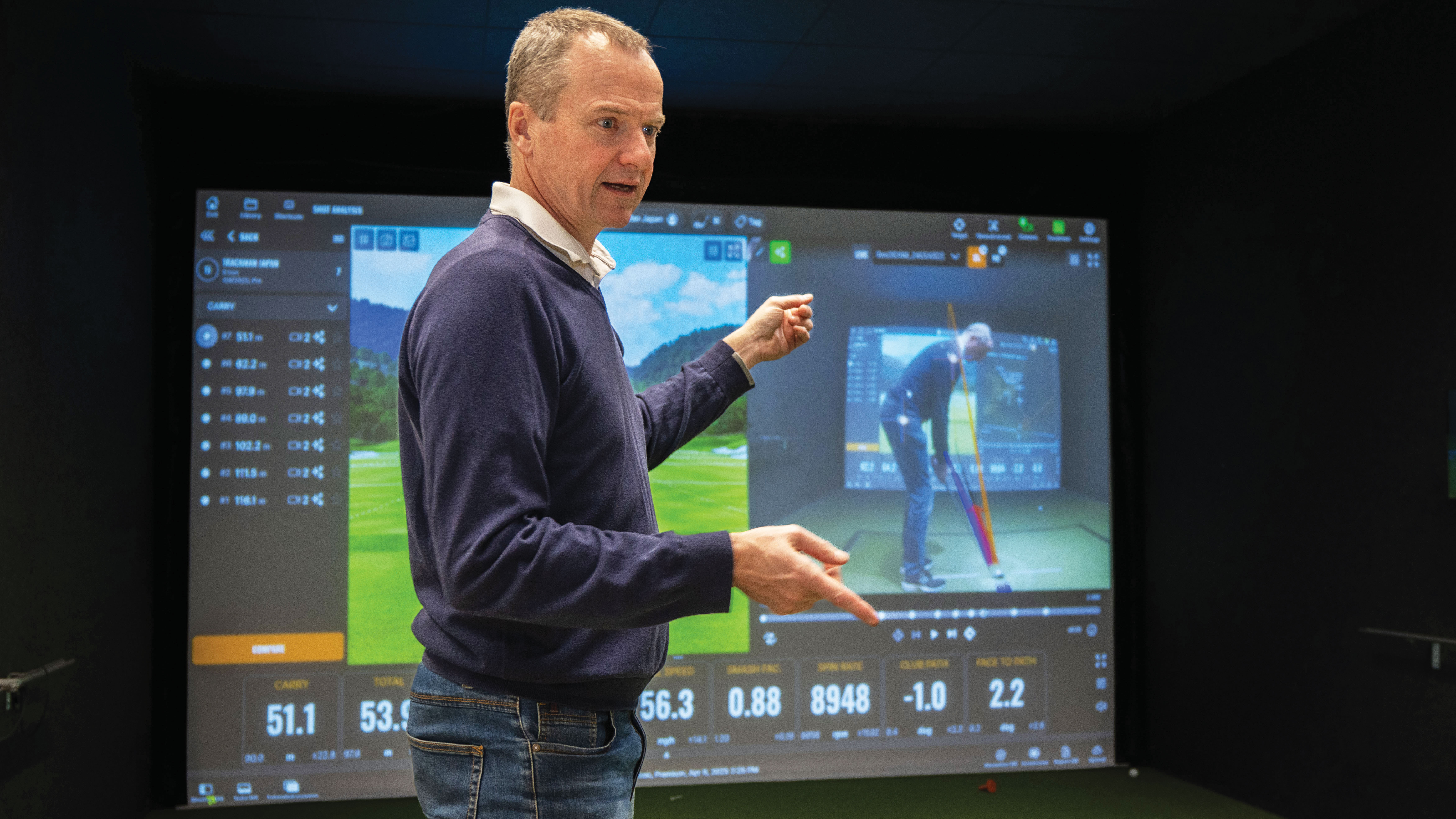
“Trackman came along with all this data and it was... well, actually it’s not the path that sends it and the face that bends it; it’s the face that sends it and the path that bends it,” is how Golf Monthly Top 50 Coach and Trackman level 2 certified instructor Tom Motley puts it.
“It transformed the way people taught.”
Motley goes on to say, “Being able to tell people actually how far they hit the ball and what their club path is… you can’t dispute it. They might tell you they swing over the top, and you can say no you don’t – your path is out to the right and you hit a push slice.
“You don’t hit a pull slice. You can change a golfer’s understanding of what they actually do, which is so much more effective.”
New vocabularies and definitions were written. Coaching manuals were rewritten. It was important that Trackman educated the industry, so, in 2011, the company launched Trackman University.
“We continue to raise the educational part of Trackman, mainly towards the professional coaches,” says Niklas Bergdahl, product owner of Trackman University.
“By doing so, we’re helping everybody get a better understanding of how to interpret the data and how to work effectively with cause and effect.
“Ultimately, this will empower the coaches and help players to practice better and play better.”
The Off-Course Golf Boom
Trackman hasn’t just had a significant impact on custom fitting and teaching; it’s also one of the companies that has revolutionized the range experience. Basic driving ranges do still exist, but they’re becoming scarce.
This publication is constantly reminding golfers about the importance of practicing with purpose, of making your range time more efficient. Today, there really are no excuses.
However, driving ranges haven’t just become a better practice facility for serious golfers; they have also become somewhere where non-golfers can experience the game with a group of friends, while also enjoying a drink and something to eat, which has been a positive trend for the industry.
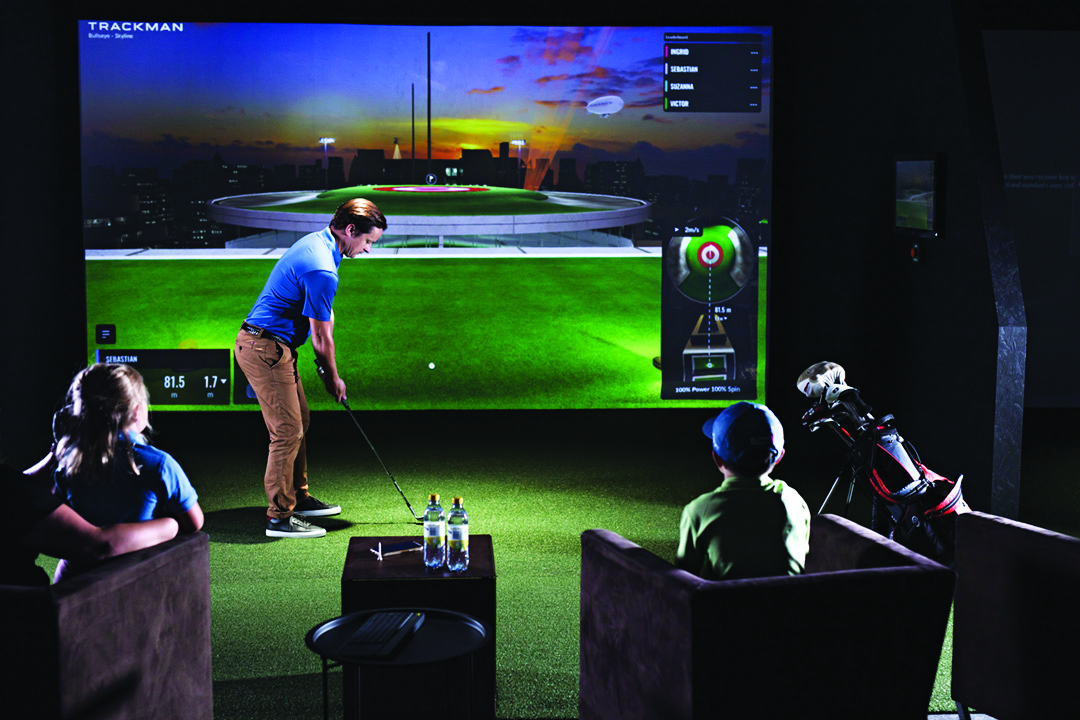
According to research undertaken for The R&A last year, 62.3 million adults (outside the USA and Mexico) consume golf in some format, which includes using a driving range.
This was up 1.1 million on 2022. When governing bodies talk about the growth of the game, it’s clear that we’re not just talking about on-course golf – the off- course market is huge, and getting bigger.
One story that hasn’t been quite so well documented is how Trackman has changed the business outlook for so many golf facilities.
“It used to be a case of golf courses subsidising their range, but in many cases it’s now the other way around,” says Kenneth Pedersen, head of Trackman Range.
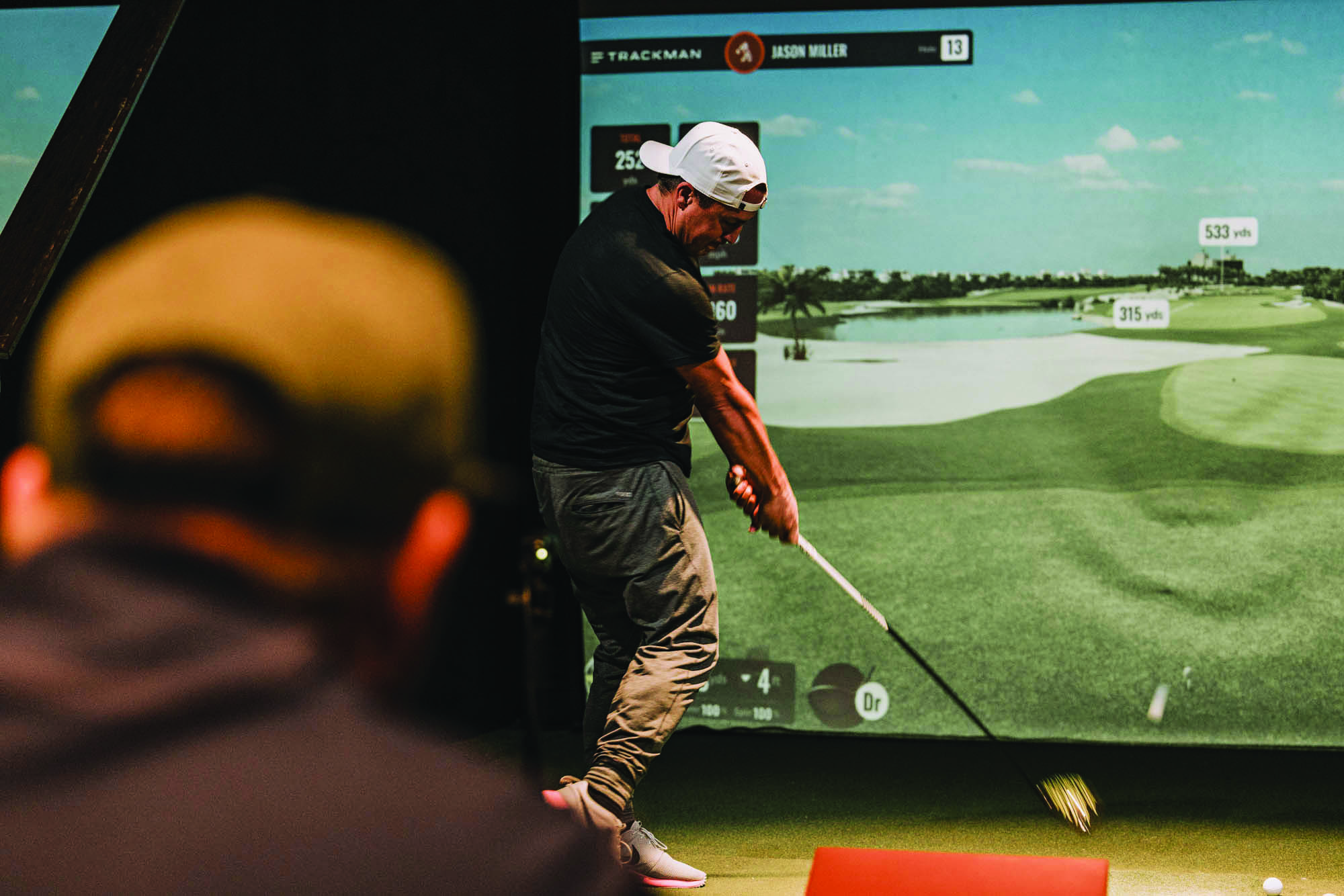
Some of the facilities are doing very big numbers, and it paints a picture of how big the off-course market is.
For example, at Ramsdale Park Golf Centre, a Trackman driving range near Nottingham in the UK, each of the 20 bays does approximately 27,000 balls a month.
Booking time slots, as opposed to turning up to buy a bucket of balls, is becoming the norm, such is the demand.
Then there’s the indoor golf scene, which is also on the rise. Sitting alongside what is now the Trackman 4 launch monitor is Trackman iO.

Launched in 2023, it’s the first purpose-built product for indoor golf, combining radar and high-speed infrared imaging to capture the full range of ball data and select club data, without the need for extra lighting.
It’s mounted above the hitting area, which means all you need is enough space to swing a club.
As part of the tour, we visit Eagle Club Indoor Golf. It’s 6pm on a Thursday, and it’s busy. We order drinks and then play nine holes on London Gardens, one of the latest fictional courses, and then the wonderful and ‘real’ Lofoten Links in Norway.
Back in the offices, we get a glimpse of the work that goes into making the experience as realistic as it is when we watch a virtual golf designer closely examining clubhouse architecture.
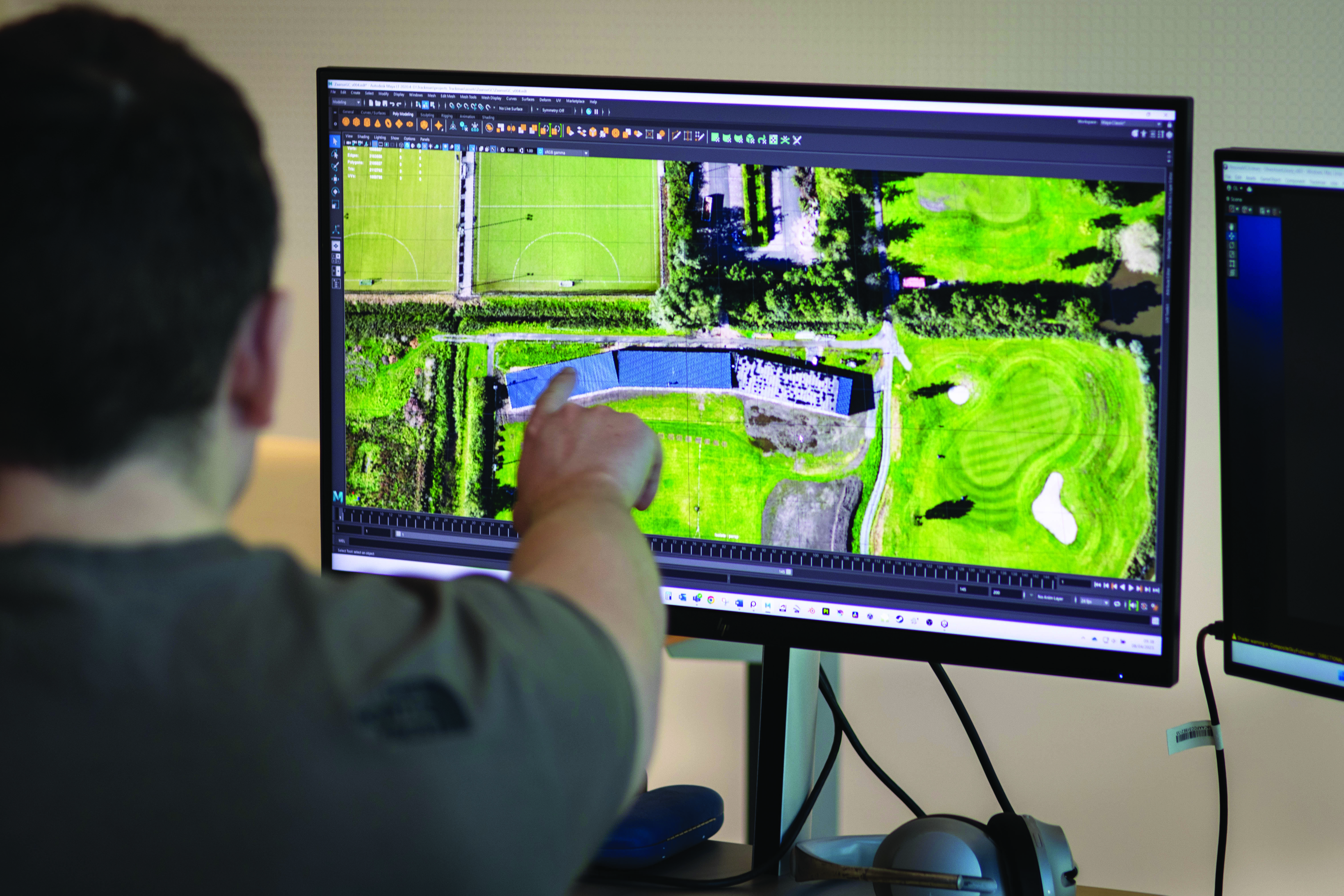
There are 16 people in this team alone. How about this for attention to detail... it takes three months to complete all the buildings for St Andrews – the buildings you see in the background – never mind the golf course itself.
Shortly after 7pm, a group of 30 golfers arrives for its regular Thursday night league competition. The venue is fully booked. It’ll be the same over the weekend.
We talk a lot about the on-course golf ‘boom’ since Covid, but over the last few years, the off-course figures have been equally positive.
Future Opportunities
According to research into the American market carried out by the National Golf Federation, in 2023, 5.4 million people in the 18-34 age category participated in solely off-course golf.
In fact, it’s outpacing ‘real’ golf. Almost two indoor golf facilities open every day somewhere around the world (well over 500 a year).
The numbers suggest that, in the UK alone, you could have approximately seven times the number of indoor golf facilities before you reach the same number of bays available in Scandinavia.
In America, meanwhile, the room for growth is thought to be so large that they could have ten times the number of bays. “By the way, we don’t think that Scandinavia is fully saturated yet,” says Eldrup-Jorgensen.
Ten years after entering the indoor golf market, Trackman is into its fourth season of the NEXT Golf Tour. Played on virtual courses, exclusively in Trackman simulators, it offers career-changing opportunities for the next generation of professional golfers, with DP World Tour and LIV invitations up for grabs.
The indoor golf scene is only going to get bigger.
It's Not Just Golf
Talking of growth, it’s hard to imagine any sport not being able to benefit from radar technology in some way.
As well as being widely used in professional baseball, Trackman has worked with several of the biggest football teams in the world, such as Aston Villa in England and Bayer Leverkusen in Germany.

Now, you would certainly expect professional footballers to know how to kick a football properly, but there are ways to kick it more efficiently and to improve technique.
“This can be a huge advantage in set-piece situations,” says Nikolaj Hermansen, the person responsible for product development within football.
A lot of clubs and players, understandably, don’t like their secrets to leave the training ground, but Manchester United’s Christian Eriksen is one player who has opened up about how Trackman technology has helped him perfect a range of different types of free kick to give him a better chance of scoring.

“When you have data and you get feedback, it’s easier for the players to make adjustments to their technique,” comments Hermansen, who says Trackman’s involvement in football started in 2010 when Adidas approached the company to do some research on the Jabulani, the official football of the 2010 FIFA World Cup.
“‘Okay, this feeling is 200rpm’, or ‘This feeling corresponds to 110km speed’. This is what you can give them,” he says. “It makes a big difference.”
“How about darts?” This question gets asked by the author of this piece, who feels that if he had a better understanding of his flight characteristics, he could yet qualify for the next PDC World Darts Championship at Alexandra Palace.
Will throwing the darts harder on a flatter flight, for example, yield more treble 20s? And why can he pick off double 16 so successfully, but struggle on others?
Darts, excuse the pun, is not on the radar. Not yet, anyway.

So far as golf is concerned, there are a couple of new parameters on the way. Tuxen remains tight-lipped, before revealing that ‘spin index’ and ‘smash index’ could be on the horizon soon.
When we leave, he has a putter under his arm and says he’s about to “try something new”.
With over 300 people working in R&D, it’s clear the company is still finding ways to get more out of the technology; you might say the apex is nowhere in sight yet.
One number really jumps out. Actually two. Last year, the company tracked more than three billion shots on the range and indoors.
That’s a lot of data. However, the current estimate for the total number of shots hit per year in golf is around 200 billion. Trackman couldn’t possibly track them all, could it?
At the start of our tour that would have sounded ludicrous. Now, though, having met some of the brightest minds in the industry, perhaps less so.
The Story Of Trackman's Orange Box

“My brother [fellow co-founder, Morten], Fredrik and I were talking and talking late one night,” says Klaus Eldrup-Jorgensen. “We said we had to find a name for our company.
“We had English-Danish and Danish-English dictionaries. We grabbed the English-Danish one and agreed to start with ‘Track’. After all, we’d be tracking a golf ball through its entire flight.
“We ran a finger down the page, scanning the words starting with ‘Track’. It wasn’t long after the days of Walkman (remember those?), so when we hit on ‘Trackman’ it just felt right. We had all sorts of funny names, but that sounded good.
“There was a guy, Steve McGugan, who designed a Hi-Fi for a Danish company, Bang & Olufsen. Its Hi-Fis were all different colours. We called him for some help in designing the box for our first Trackman unit. He came up with some great ideas and then said, ‘You must make it orange.’
“‘No way,’ we said – ‘it must be conservative, maybe green.’
“‘No, orange,’ he said! ‘Do that and you own that colour on the golf course.’ He was so right. Today, you don’t need to say anything – you just see the orange and you know it’s Trackman.
That was some great advice for $1,000.”







